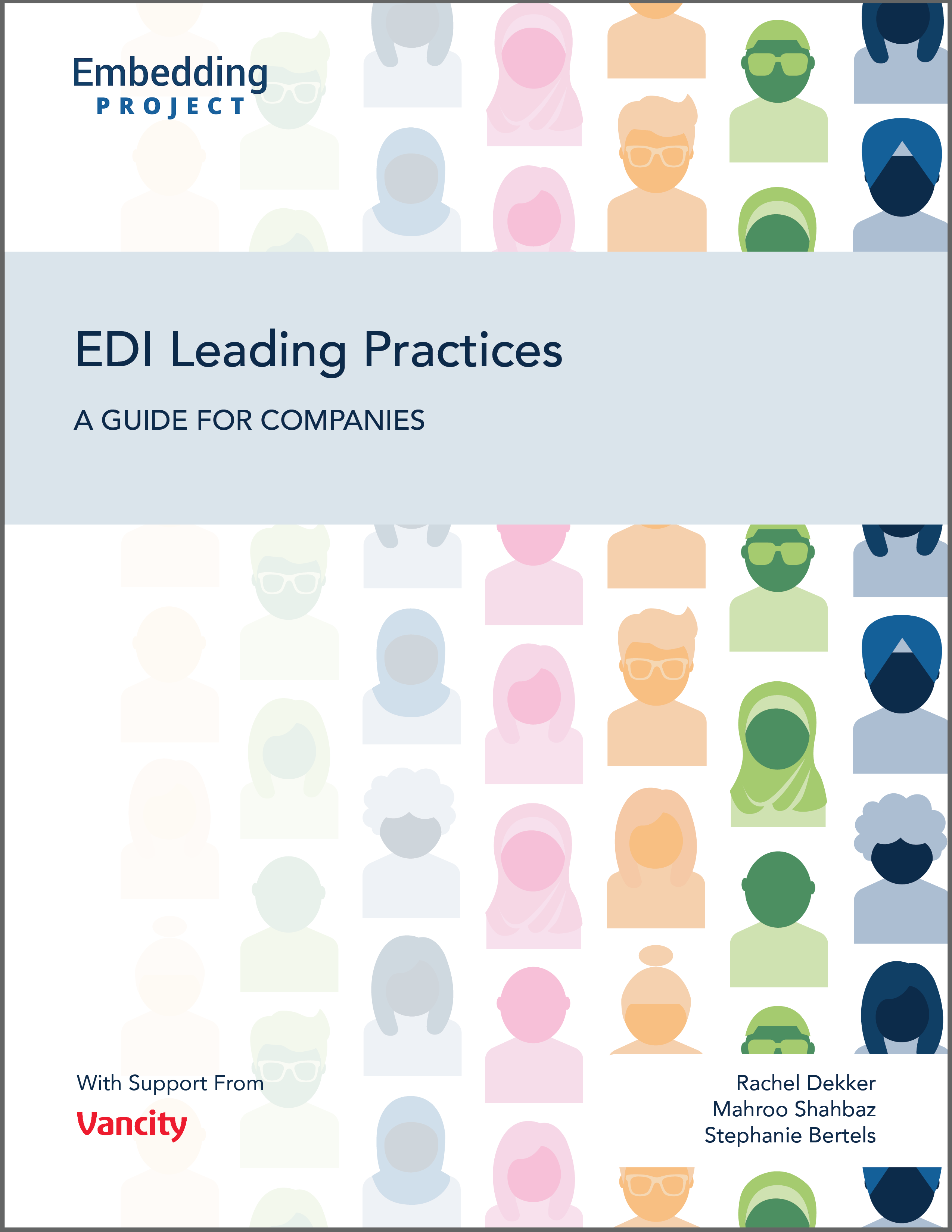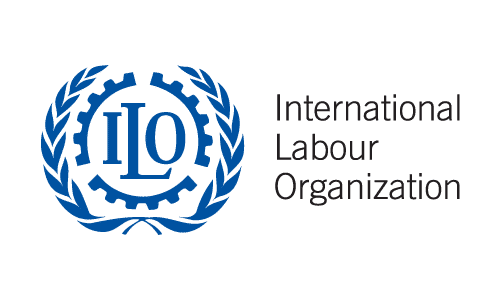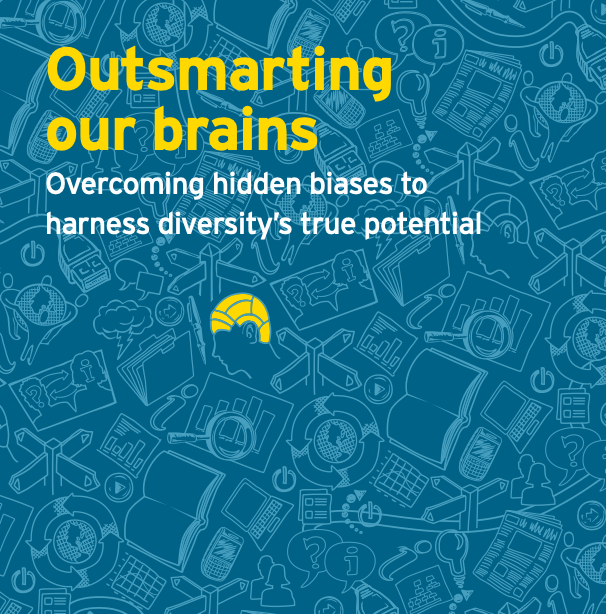Promote
Description
These resources will help you to incorporate sustainability criteria into decisions about employee advancement and to make room for a more inclusive workforce by tackling systemic inequality and implicit biases.
Share this Practice on:LinkedIn
Resources
EDI Leading Practices: A Guide for Companies
Workplace equity, diversity, and inclusion (EDI) is a complex and rapidly evolving space, and increasingly, companies are interested in understanding how to meaningfully advance EDI in their organisations. To help them do so, we consulted EDI research and guidance, reviewed practices of over 100 companies, and sought input from practitioners across a range of industries and geographies. Our Equity, Diversity, and Inclusion Leading Practices Guide offers a comprehensive framework with practices, case studies, and resources to help organisations embed EDI into their strategy, structures, and culture.
Promotion Policies with an Equity Lens: 10 Tips for Building an Equitable Promotion Policy
This guide from HRx can help you understand how to assess promotions policy equity and reduce the advancement gap for marginalised groups in your organisation. It begins by explaining what a promotions policy is and why it matters. It then outlines four principles for assessing promotions policy equity. This is followed by ten actionable steps for developing an equitable policy: 1) state the purpose; 2) define the scope; 3) establish a review process; 4) include definitions; 5) map requirements and benefits; 6) set criteria; 7) measure employee performance; 8) share promotion opportunities; 9) collect data and feedback; and 10) educate team members. This resource will be most useful to HR and DEI teams.
Breaking barriers: Unconscious gender bias in the workplace
Pressure is mounting on businesses to pursue social equity and address and reduce disparity in opportunities within the workplace, but many companies struggle to identify and prevent the causes. This research note from the International Labour Organization will help you to better understand unconscious gender bias and the barriers it creates for women’s career advancement, as well as how to mitigate and overcome the effects. The report explores how such bias manifests in the workplace and includes methods, metrics, and training tips for addressing the issue.
Outsmarting our brains: Overcoming hidden biases to harness diversity’s true potential
Despite years of good intentions and organised efforts to foster a diverse and inclusive work environment, many companies are still struggling to grow and capture the benefits of fair organisational management. This short guide from Ernst & Young (EY) and the Royal Bank of Canada (RBC) explores the implications of hidden biases in today's work environment. It explains hidden bias, including how it emerges and manifests, and highlights ways in which it can affect behaviour in the workplace. This resource is a good starting point for identifying and challenging hidden biases when recruiting and promoting, and includes a list of simple questions, tips, and actions for identifying and correcting such discrimination.
How to deal with unconscious biases in human resources decisions
This article from the Diversity & Inclusion Platform can help you to understand how implicit biases can influence personnel-related decision-making, and why critical reflection is necessary for inclusive leadership, recruitment, and promotion. It provides a comprehensive explanation of implicit bias, including key causes and the ways it can manifest. It then explores the impact of implicit bias on recruitment and promotion, as well as how to avoid pitfalls. This is a good resource for business leaders, sustainability change agents, and HR professionals, and the principles may also benefit those tasked with team-building.
The Role of HR in Achieving a Sustainability Culture
Creating and embedding a culture of social and environmental sustainability within your business strategy requires comprehensive integration and coordination with human resource functions. Selecting, empowering, and retaining sustainability-minded talent that values the integrity of vital systems means taking a conscientious approach to recruiting applicants, selecting and orientating new employees, evaluating performance, determining compensation and succession planning and training, and more. This research paper from Jay Liebowitz unpacks how creating a “people first” employer-of-choice culture contributes to creating a culture of sustainability and systems stewardship, and will help you to understand the role that HR can play in connecting the dots that will safeguard and grow these efforts.
Women in the Workplace 2024: The 10th-anniversary report
Since 2015, McKinsey & Company has conducted annual studies on the state of women in corporate America. This report consolidates these findings to provide insights into workplace gender diversity trends and solutions. It is divided into four sections: the first three cover the increase in women’s representation, the expansion of company efforts, and the lack of progress reported in women’s lived experience, and the final section outlines research-based tips and strategies to help companies improve. This resource will be most useful to HR teams.
Reimagining the way we work: A closer look at how companies can put equity back into talent and build high-performing teams
This white paper from perfeqta can help you understand how to build a high-performance workplace culture. It shows that employee wellbeing must be prioritised in order to motivate and engage employees. Equitable policies and inclusive talent management systems are highlighted as a way to do this. The paper outlines twelve actions to implement them while emphasising the importance of building a culture of belonging and psychological safety that values employee autonomy and flexibility. This resource will be most useful to HR practitioners and business leaders.
How (and why) to develop employee career paths
A growing number of unknowns, disruptions, and stressors, not to mention a growing demand for suitable talent, are driving companies to map out the career paths of their employees to better meet long-term business needs. This short article will help you to understand the early steps you can take towards building this internal talent pipeline.
Share this Practice on:LinkedIn








